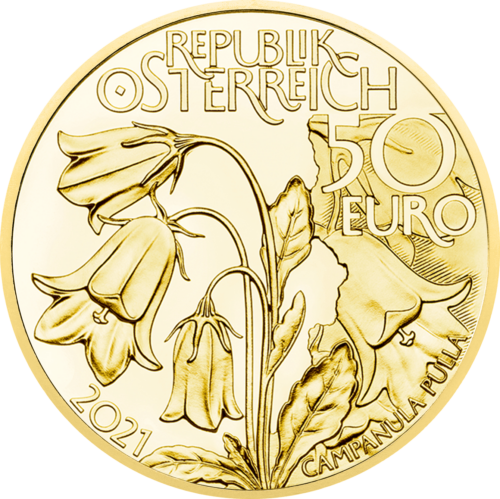



Reverse: The reverse of the coin features a lynx standing in front of the main ridge of the Sengsengebirge massif in Kalkalpen National Park and its densely wooded slopes. Although six lynxes currently inhabit the park, sightings of these wild cats are rare due to their wary nature.
Obverse: The obverse of the coin depicts the Austrian bellflower, distinguished by its bluish-purple, drooping blossoms. This plant, well-known in Kalkalpen National Park, is rarely seen elsewhere. The top of the coin bears the inscription "Republik Österreich." Slightly to the right, the coin’s denomination of 50 Euro is minted.
About the coin: Central Europe’s largest forested area – Kalkalpen National Park – comprises 30 different forest ecosystems. Of the 15 endemic vascular plant species found in the park, the Austrian bellflower is particularly notable. Located in Upper Austria, this park was established in 1997. Largely untouched by human habitation and barely penetrated by transport routes, the dark and dense woodland in this northern branch of the Limestone Alps serves as a precious reminder of the pristine, primeval forests that once covered the continent for millions of years. The plan is to gradually restore the Kalkalpen forest to its completely unmanaged, natural state by letting nature take its course. This will not only provide deep insights into the natural world of prehistoric times but also offer a better understanding of the environment in which our distant ancestors lived. In the park’s ancient beech forest, one can find a beech tree dating back to 1474 – the oldest beech tree in continental Europe.